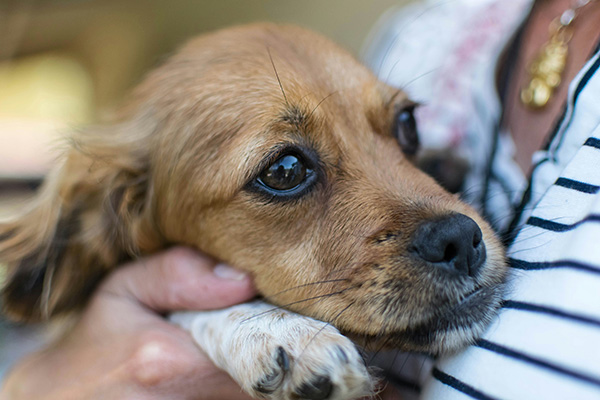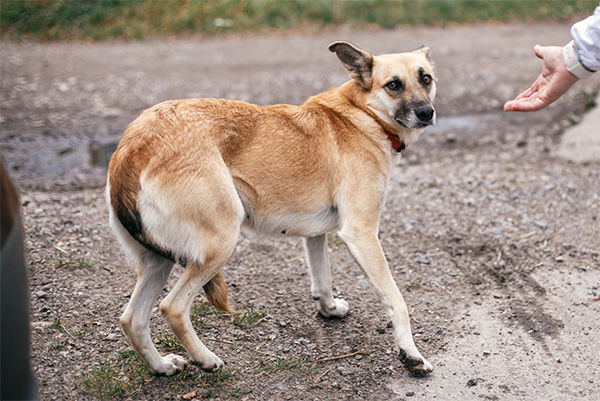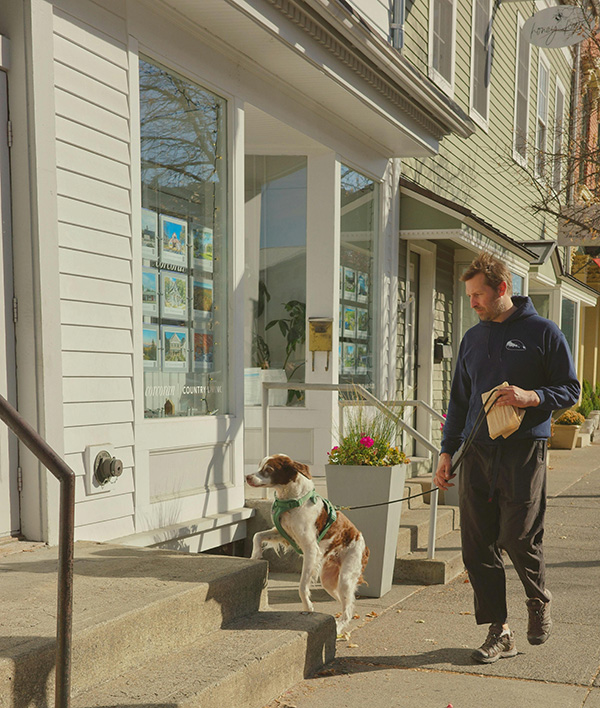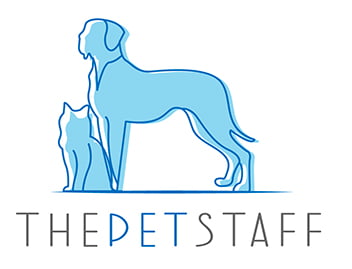Separation anxiety is a common but difficult problem that many dog owners encounter. When dogs experience separation anxiety, they may exhibit distressing behaviors that not only affect their well-being but also strain the relationship between the pet and the owner. Understanding the root causes and symptoms of separation anxiety is crucial in providing the appropriate care and support for your furry friend.
Dealing with separation anxiety in dogs involves managing the symptoms and improving the quality of life for both the pet and its owner. By understanding this condition more deeply, dog owners can proactively alleviate anxiety, ensuring a happier and more harmonious household.
What is Separation Anxiety?
Separation anxiety in dogs can present through various behavioral signs, such as excessive barking, destructive chewing, and inappropriate elimination. These behaviors usually arise when the dog is alone or anticipates their owner’s departure. While the intensity of these symptoms can differ, they generally signal significant distress and fear.
It's crucial to distinguish separation anxiety from other behavioral problems, such as general disobedience or different types of anxiety. While some dogs may act out due to boredom or a lack of training, separation anxiety is specifically linked to the dog’s attachment to its owner and the distress it feels when separated from them.
Causes of Separation Anxiety in Dogs

Various factors can contribute to the onset of separation anxiety in dogs. Genetics can be a significant factor, as some breeds are more prone to anxiety due to their temperament or selective breeding history. Being aware of your dog’s breed-specific characteristics can help you anticipate and address potential anxiety issues.
Environmental changes are another common trigger for separation anxiety. Relocating to a new home, altering daily routines, or introducing a new family member can create stress that may trigger anxiety in dogs. Since dogs rely on routine and predictability, these disruptions can be especially distressing.
Previous experiences, particularly those involving trauma or abandonment, can significantly affect a dog’s mental health. Dogs that have been rehomed frequently or have faced neglect are often more prone to developing separation anxiety.
Symptoms of Separation Anxiety
Separation anxiety in dogs can present as a range of distressing behaviors that may worry pet owners. Common symptoms include destructive behaviors like chewing furniture, excessive vocalization such as barking or whining, and house soiling despite being completely house-trained. These anxious behaviors generally arise when the dog is alone, suggesting that the dog is undergoing substantial distress due to separation anxiety.
In cases of severe separation anxiety, many dogs may engage in more extreme behaviors, such as attempting to escape confinement, which can lead to self-harm or panic attacks. These dogs may show signs of extreme stress, such as pacing, drooling, or refusing to eat when they anticipate being left alone. Pet parents often observe their dog’s anxiety intensifying around departure cues like picking up keys or putting on a coat, which can trigger these distress behaviors even before they leave the house.
Dogs suffering from this condition may also exhibit potty accidents or soiling the house, even if they are completely house-trained. These behaviors are often accompanied by other signs of extreme stress, such as destroying objects around the home, excessive panting, or whining. Additionally, some high-energy dogs might become hyperactive, engaging in non-stop barking or pacing as a way to cope with their anxiety.
Diagnosis
Diagnosing dog separation anxiety is critical in addressing this serious condition affecting many dogs. Pet parents often notice signs of distress in their dog's behavior when left alone, prompting the need for a thorough evaluation. The diagnostic process typically begins by ruling out medical problems, such as a urinary tract infection or other physical issues that could explain the dog's behavior.
A veterinary behaviorist or certified applied animal behaviorist may be consulted to assess the dog’s separation anxiety and determine its severity, whether it is mild or more severe. During this process, the professional will evaluate how the dog reacts to the sudden absence of its pet parent and any departure cues that trigger anxious behaviors.
The Importance of Early Socialization and Training
Effective socialization during the puppy stage is vital for preventing separation anxiety in dogs. Puppies exposed to various environments, people, and other dogs are more likely to develop into well-adjusted adults, reducing the risk of becoming anxious dogs later in life. Socialization helps them become more adaptable and less prone to stress hormones when faced with new or challenging situations, which is essential in preventing severe anxiety or panic attacks associated with dog separation anxiety.
Basic dog separation anxiety training techniques can also play a significant role in treating separation anxiety. Teaching your dog commands such as "stay" and "calm" can help them feel more secure during alone time when you leave, allowing the dog to remain relaxed. Consistent training sessions reinforce positive dog behavior and help build a trusting relationship between pet parents and their dogs. This foundation is crucial for treating separation anxiety and ensuring that dogs with separation anxiety can learn to cope more effectively. Many pet parents find that combining these techniques with puzzle toys stuffed with treats or engaging food toys helps keep their dog's mind occupied and the dog's body calm during periods of separation.
Preventative Measures for Separation Anxiety

Establishing a routine and maintaining predictability are key strategies to treat separation anxiety in dogs. Many pet parents find that dogs with separation anxiety feel more secure when they know what to expect. Maintaining a regular daily routine for feeding, walks, and playtime helps lower stress levels and relax the dog. Pet parents might also consider using a dog sitter or dog walker to maintain this routine, especially during periods of extended absence.
Gradual desensitization is another effective technique to treat separation anxiety. Gradually extending your time away from your dog can help them become more comfortable with being alone. Begin with brief absences and slowly increase the duration, while keeping your departures and arrivals calm and low-key. Many dogs benefit from this approach, which can prevent severe anxiety and panic attacks related to sudden absences.
Behavioral Modification Techniques
Desensitization and counterconditioning are powerful tools for addressing a dog's separation anxiety. This method involves gradually introducing your anxious dog to their anxiety triggers, like putting on your coat or picking up your keys, without actually leaving the house. Over time, these actions become less significant and anxiety-inducing, helping to cure separation anxiety or at least significantly reduce its impact.
Positive reinforcement is another crucial technique in treating separation anxiety. Rewarding your dog for staying calm, particularly upon your return, helps them associate your absence with positive experiences. This could include treats, praise, or a puzzle toy stuffed with a favorite food. Interactive puzzle toys can be an excellent way to keep your dog’s mind engaged and distracted while alone.
Avoiding negative reinforcement is equally important. Punishing your dog's behavior during episodes of anxiety can exacerbate the problem, increasing their stress and making the anxiety worse. Instead, focus on rewarding calm behavior and patiently working through the anxiety with your dog. In some cases, anti-anxiety medication or calming supplements prescribed by a veterinary behaviorist may be necessary to help manage more severe cases.
Creating a Safe and Comfortable Environment
Creating a safe and comfortable space for your dog can greatly help reduce anxiety. This might be a snug corner with a cozy bed or a crate that is a den-like refuge. The goal is to provide an area where your dog feels secure and can go when feeling anxious. Comfort items such as familiar toys, blankets, or even clothing with your scent can also help ease anxiety, providing a sense of familiarity and security.
For severe anxiety involving family members, it may be necessary to use doggy daycare services or seek the help of a certified applied animal behaviorist or a certified professional dog trainer. These professionals can guide pet parents through the training process and help treat separation anxiety effectively, ensuring a better quality of life for both the dog and their family.
Importance of Physical and Mental Stimulation
Regular exercise is essential in managing anxiety, as physical activity helps to reduce stress and expend excess energy that might otherwise manifest as destructive behavior. Daily walks, playtime, and even structured activities like agility training can make a significant difference.
Mental stimulation is equally important. Keeping your dog's mind active with puzzle toys, food puzzle, interactive games, and training exercises can help prevent boredom and reduce anxiety. A mentally engaged dog is less likely to exhibit anxiety-related behaviors as they remain occupied and content.
Crate Training and Its Role in Anxiety Management
Crate training can help manage separation anxiety by offering your dog a secure and familiar environment. When used correctly, a crate can serve as a den where your dog feels protected, reducing anxiety during your absence.
It’s essential to associate the crate with positive experiences. Gradually introducing the crate and using treats, toys, and praise can help your dog view it as a safe retreat rather than a confinement. Additionally, avoid using the crate as a form of punishment, as this can lead to anxiety related to the crate.
Medications and Alternative Therapies

In certain situations, medication may be required to manage severe separation anxiety. A veterinarian can prescribe these medications to help lower anxiety levels, which can enhance the effectiveness of behavior modification techniques.
Various medications are available, including anti-anxiety drugs and antidepressants. Each option has its own specific use, and a veterinarian can identify the most suitable choice based on your dog’s unique needs and health condition.
Alternative therapies, such as pheromone diffusers, herbal remedies, and even acupuncture, can also be considered. These therapies can complement traditional treatment methods, relieving anxious dogs more.
Gradual Departure Training
Gradual departure training involves practicing short absences to help your dog become accustomed to being alone. Begin by leaving for only a few minutes and gradually extend the time away. This approach helps your dog understand that you will consistently return, which can alleviate their anxiety.
As your absences increase in duration, it's crucial to keep a calm and consistent routine. Refrain from making a big deal of your departures or arrivals, as this can exacerbate your dog’s anxiety. Consistency in your departure routine helps reinforce the idea that your absence is a normal part of the day.
Managing Severe Cases of Separation Anxiety
Professional behavioral therapy may be necessary for dogs with severe separation anxiety. A certified behaviorist can collaborate with you to develop a customized plan that addresses your dog’s individual needs and behaviors.
These plans typically include a mix of behavior modification strategies, adjustments to the environment, and, in some cases, medication. The goal is to reduce anxiety and improve your dog's ability to cope with being alone, ultimately leading to a happier, healthier pet.
Impact on the Dog-Owner Relationship
Separation anxiety can place significant stress on the dog-owner relationship. The constant worry about your dog's well-being and the challenges of managing their anxiety can take a toll on your own mental and emotional health.
Addressing separation anxiety can also enhance the bond between you and your dog. By working together to overcome these challenges, you can build a deeper understanding and trust, leading to a more fulfilling relationship.
Long-Term Management and Coping Strategies
Dealing with separation anxiety is usually an ongoing process. Even after significant progress has been made, it's important to continue supporting your dog and being mindful of their needs. Regular check-ins with a behaviorist or veterinarian can help ensure that any new issues are addressed promptly.
As life changes occur, such as moving to a new home or changes in routine, it's important to adapt your approach to managing your dog's anxiety. Being proactive and prepared can prevent setbacks and help your dog adjust to new situations more easily.
Myths and Misconceptions About Separation Anxiety
Many misconceptions exist about separation anxiety, such as the idea that it only affects small dogs. In reality, dogs of all sizes and breeds can develop separation anxiety, and it's important to address the condition based on individual needs rather than assumptions.
Understanding the reality of separation anxiety is crucial in effectively managing it. It’s not a simple issue of disobedience or stubbornness but a complex emotional response that requires empathy, patience, and a well-informed approach.
